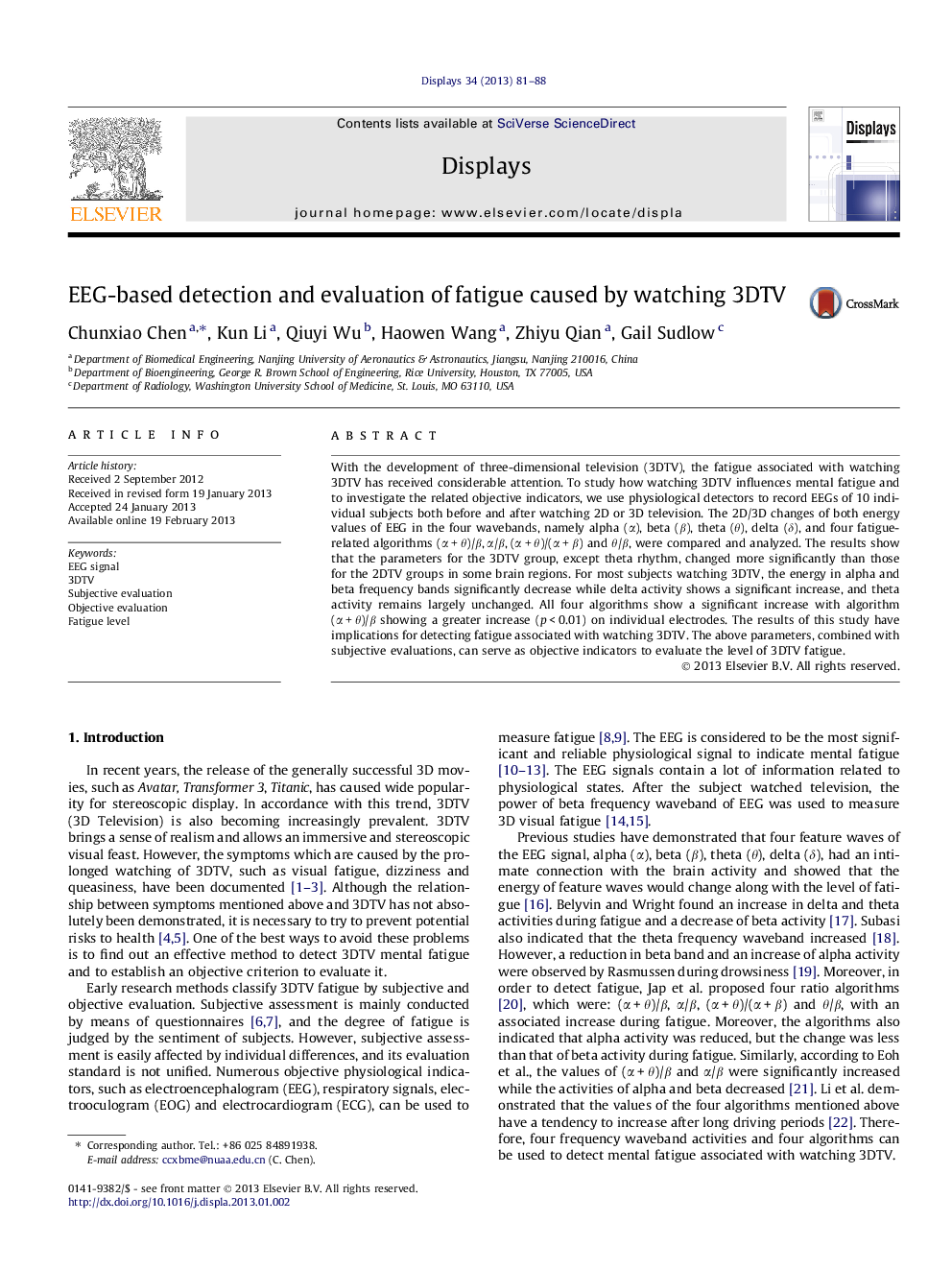| Article ID | Journal | Published Year | Pages | File Type |
|---|---|---|---|---|
| 538692 | Displays | 2013 | 8 Pages |
With the development of three-dimensional television (3DTV), the fatigue associated with watching 3DTV has received considerable attention. To study how watching 3DTV influences mental fatigue and to investigate the related objective indicators, we use physiological detectors to record EEGs of 10 individual subjects both before and after watching 2D or 3D television. The 2D/3D changes of both energy values of EEG in the four wavebands, namely alpha (α), beta (β), theta (θ), delta (δ), and four fatigue-related algorithms (α + θ)/β, α/β, (α + θ)/(α + β) and θ/β, were compared and analyzed. The results show that the parameters for the 3DTV group, except theta rhythm, changed more significantly than those for the 2DTV groups in some brain regions. For most subjects watching 3DTV, the energy in alpha and beta frequency bands significantly decrease while delta activity shows a significant increase, and theta activity remains largely unchanged. All four algorithms show a significant increase with algorithm (α + θ)/β showing a greater increase (p < 0.01) on individual electrodes. The results of this study have implications for detecting fatigue associated with watching 3DTV. The above parameters, combined with subjective evaluations, can serve as objective indicators to evaluate the level of 3DTV fatigue.
► The activities of α, β, and δ rhythms in EEG changed significantly after watching 3DTV. ► The values of (α + θ)/β, α/β, (α + θ)/(α + β), θ/β increased clearly after watching 3DTV. ► The above parameters in 3D group changed more clearly than in 2D group. ► The objective evaluation model for 3DTV fatigue was established.
